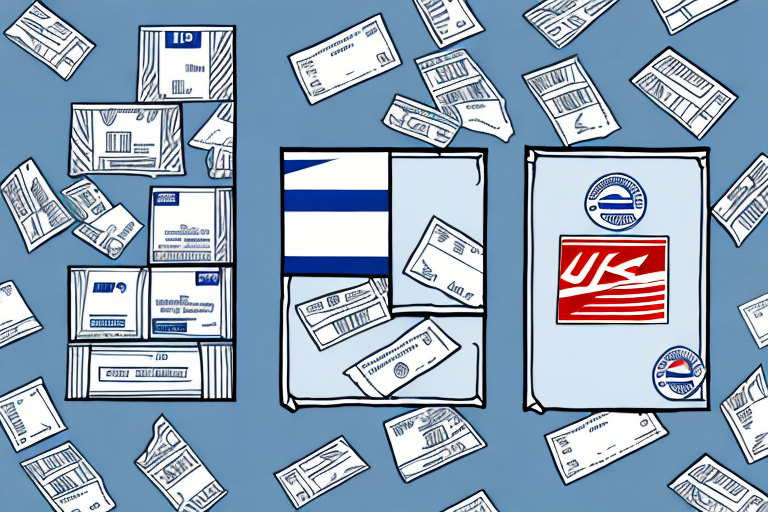The History and Evolution of USPS and UPS
The United States Postal Service (USPS) has been a cornerstone of American communication since its establishment in 1775. Originally created to deliver mail efficiently across the burgeoning nation, USPS has expanded its services to include a variety of shipping options. As a government agency, USPS operates under federal regulations and is funded by taxpayer dollars.
United Parcel Service (UPS), founded in 1907, began as a messenger company in Seattle and has grown into a global logistics powerhouse. Unlike USPS, UPS is a publicly traded company, accountable to its shareholders and driven by market competition. Over the years, UPS has embraced advanced technologies and expanded its international reach, positioning itself as a leader in the logistics industry.
Pros and Cons of USPS and UPS
Advantages of USPS
- Extensive Network: With over 31,000 retail locations, USPS offers unparalleled accessibility across the United States.
- Cost-Effective for Small Packages: USPS often provides more affordable rates for lightweight and small parcels.
- Free Shipping Supplies: USPS supplies free boxes, envelopes, and other shipping materials for various services.
- Sustainability Initiatives: USPS has adopted eco-friendly practices, including alternative fuel vehicles and recycling programs.
Disadvantages of USPS
- Slower Delivery Times: USPS can be slower compared to UPS, especially for expedited services.
- Limited International Options: USPS offers fewer international shipping choices and less comprehensive tracking.
- Financial Challenges: USPS has faced financial strains due to declining mail volumes and increased competition.
Advantages of UPS
- Fast and Reliable: UPS is renowned for its speedy delivery options, including Next Day Air and two-day shipping.
- Advanced Tracking: UPS provides detailed, real-time tracking information and proactive delivery notifications.
- Comprehensive Insurance: UPS offers extensive insurance coverage, up to $100,000 for certain services.
- Global Reach: With a vast international network, UPS excels in global logistics and customs handling.
Disadvantages of UPS
- Higher Costs: UPS can be more expensive, particularly for small or lightweight shipments.
- Limited Retail Locations: Compared to USPS, UPS has fewer physical locations, potentially reducing accessibility.
- Strict Package Restrictions: UPS enforces strict size and weight limitations, which may incur additional fees.
Cost-Effectiveness and Money-Saving Tips
Determining which service is more cost-effective depends on your specific shipping needs. According to the USPS rate guide, for small, lightweight packages, USPS often offers cheaper rates. Conversely, for larger or heavier shipments, UPS may provide better value despite higher base rates.
To save money on shipping:
- Compare Rates: Utilize online tools to compare USPS and UPS rates based on package size, weight, and destination.
- Leverage Discounts: Both USPS and UPS offer discounts for businesses, bulk shipments, and frequent users. Explore UPS business solutions for potential savings.
- Use Flat Rate Options: USPS Priority Mail Flat Rate boxes can be a cost-effective option for shipping heavy items within the box's size limits.
Tracking Capabilities and Delivery Speed
Tracking Features
Both USPS and UPS offer tracking services, but UPS provides more advanced tracking with real-time updates and detailed package journey information. UPS's tracking system includes email and text alerts, ensuring proactive communication.
USPS tracking is reliable for most services, especially Priority Mail and Priority Mail Express, though it may lack the granularity of UPS's updates. For international shipments, USPS tracking is available for certain services, whereas UPS excels in global tracking capabilities.
Delivery Speed
UPS generally offers faster delivery times, with services like Next Day Air guaranteeing overnight delivery. According to the UPS delivery commitments, their expedited services ensure prompt arrivals.
USPS's Priority Mail Express provides overnight delivery to most U.S. locations, but it may not always meet the same reliability standards as UPS. For non-urgent shipments, USPS's standard delivery options are adequate but slower compared to UPS's offerings.
Customer Support and Insurance Options
Customer Support
UPS is known for its responsive and personalized customer support, especially for businesses. They offer dedicated account managers and robust online support channels. In contrast, USPS provides extensive in-person support through its vast network of retail locations, which can be advantageous for those preferring face-to-face assistance.
Insurance Coverage
When shipping valuable items, insurance is crucial. UPS offers comprehensive insurance options, covering up to $100,000 for certain shipments, making it ideal for high-value goods. USPS offers limited insurance, with maximum coverage typically up to $5,000, which may not suffice for more expensive items.
International Shipping and Shipping Restrictions
International Shipping
For international shipments, UPS stands out with its extensive global network and efficient customs brokerage services. According to the UPS international services, they offer a range of shipping options tailored to various needs and destinations.
USPS provides international shipping through services like First-Class Package International and Priority Mail International. While reliable, USPS may have longer delivery times and fewer tracking capabilities compared to UPS.
Shipping Restrictions
Both carriers enforce strict shipping restrictions on hazardous materials, firearms, and other regulated items. UPS tends to have more stringent policies, especially concerning hazardous materials, requiring special handling and documentation. USPS also restricts certain items, particularly for international shipments.
It's essential to consult each carrier's official guidelines to ensure compliance and avoid shipment delays or additional fees.
Packaging Options and Network Size
Packaging Solutions
USPS offers a variety of free packaging supplies for services like Priority Mail and Priority Mail Express, including flat rate boxes and envelopes. This can reduce overall shipping costs, especially for businesses and frequent shippers.
UPS provides branded packaging options for purchase and offers custom packaging solutions for businesses with specific needs. Their packaging is designed to withstand rigorous handling, ensuring the safety of shipments.
Network Accessibility
USPS boasts a more extensive network, with over 31,000 retail locations and partnerships with postal services in over 190 countries. This wide reach makes USPS highly accessible for both domestic and international shipping.
UPS operates a vast global network as well, with more than 135,000 access points worldwide. Their infrastructure is optimized for efficient ground shipping and international logistics, catering to a diverse range of shipping requirements.
Conclusion: Choosing Between USPS and UPS
Choosing between USPS and UPS ultimately hinges on your specific shipping needs. If you require cost-effective solutions for small, domestic packages and value accessibility, USPS is an excellent choice. Conversely, for faster delivery, advanced tracking, comprehensive insurance, and robust international shipping options, UPS stands out as the superior option.
Consider factors such as package size, weight, destination, and the importance of delivery speed and tracking when making your decision. By evaluating these aspects and leveraging the strengths of each carrier, you can select the shipping service that best aligns with your requirements and budget.








